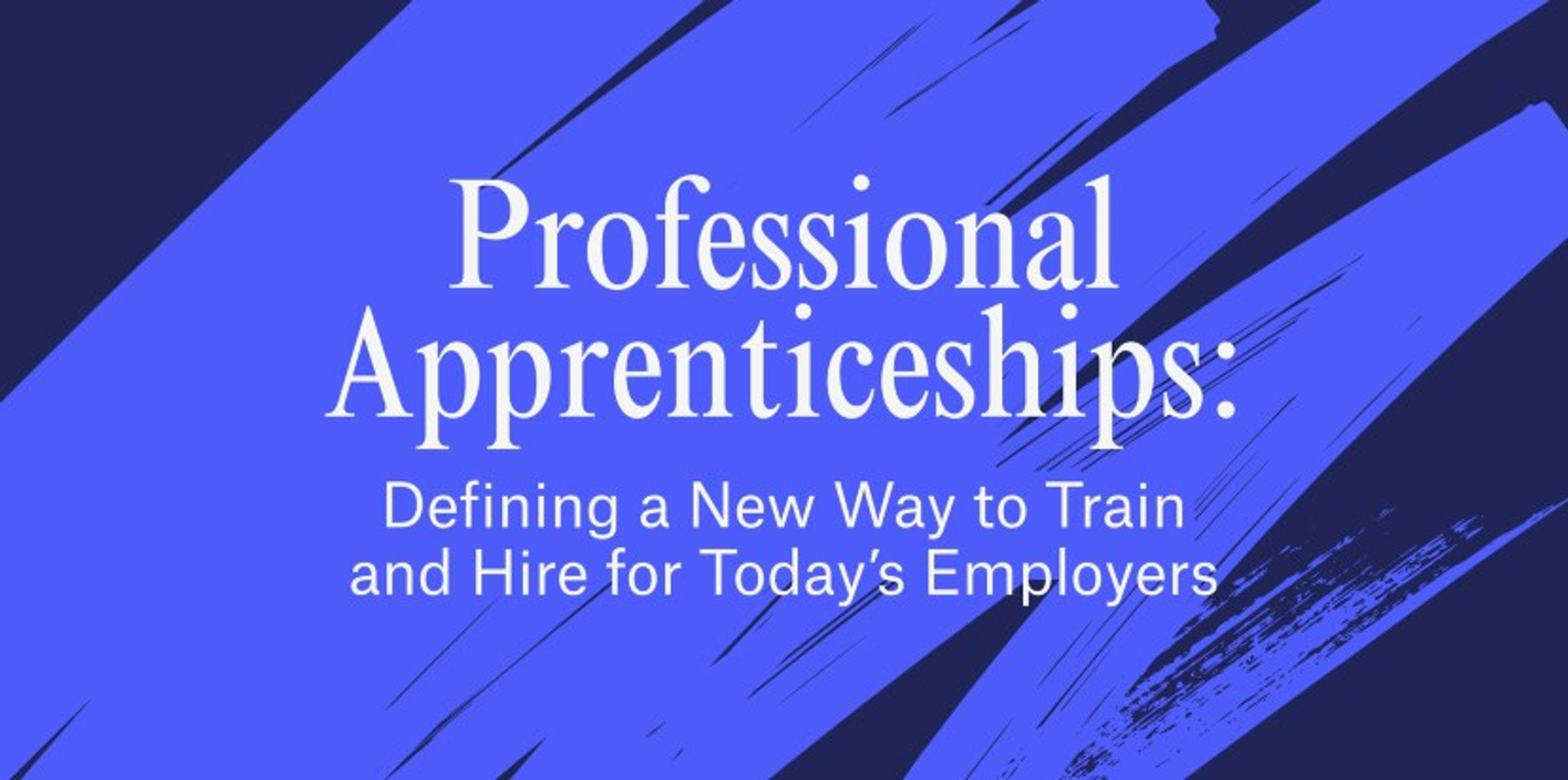Contents
Technology is already a part of our everyday lives, both at home and at work, but it continues to be even more integrated across every industry.
As a result, tech leaders have to balance the demands of managing inside and outside influences as they shape their organization's vision for the future. This often means finding ways to navigate an increasingly fast-paced business landscape hallmarked by a race to secure top talent.
In this article, we’ll cover five of the most important talent-related challenges to address in 2023:
- Unease among Gen Z candidates
- Continued difficulty attracting top tech talent
- Increased scrutiny to improve workforce diversity
- A widening of the digital skills gap
- Growing pressure to drive business impact
For each challenge, we’ll break down the latest research on how it might impact your business and share actionable ways to prepare your organization.
Challenge #1: Economic conditions causing unease for Gen Z
The world may be entering a post-pandemic era, but economic uncertainty persists.
In Q4 2022, over 70,000(opens new window) tech employees were laid off from 400+ companies — more than any other quarter in the last two years, including the volatile Q2 2020 that marked the start of COVID-19. At the same time, Ziprecruiter’s Job Seeker Confidence Index hit an all-time low, with 41%(opens new window) of respondents saying they’ve been unable to find relevant opportunities.
These conditions are impacting the way the class of 2023 and young Gen Z job applicants feel about their future careers.
A survey conducted by Handshake(opens new window) of over 1,400 future 2023 graduates found that:
- Half report being affected by economic news, stating that it makes them feel anxious, worried, and stressed
- Future graduates plan to apply to more jobs, a more diverse range of jobs, and start their search sooner than initially planned
- Job stability is a top priority for 74% of respondents (along with salary)
Future grads and new applicants aren’t the only ones worried about the state of the job market.
After years of pandemic-induced layoffs, The Great Resignation, large-scale restructurings, the rise of automation, and now looming inflation pressures, even employees with established careers feel less secure in their positions.
Transparent communication is key
Going forward, tech leaders must recognize this ongoing challenge and take steps to keep their best people engaged. Transparency is essential.
Whenever possible, it’s best to over-communicate about any changes that may cause unease, like adjustments to the org structure or hiring strategy. Leaders can also help protect company morale by emphasizing organizational strengths and successes, both publicly and often.
Challenge #2: Continued difficulty recruiting tech talent
It’s no secret that demand for software engineers is rapidly outpacing supply.
There are currently five jobs for every one developer(opens new window) in the US, with a worldwide shortage of four million developers(opens new window) predicted by 2025. In the US alone, 200,000 developer roles will need filling every year through 2030.
Even with a pipeline of qualified talent, these aren’t always easy hires to make. It’s currently taking 50% longer(opens new window) for companies to hire tech employees compared to other types of hires (66 days vs. 43 days, respectively). For developers specifically, the hiring timeline jumps to 81 days. While there seems to be no shortage of applicants in general, there is a shortage of those that are qualified for jobs in need of filling.
Explore new ways to train and hire tech talent
The shortage of talent can be a barrier to success for many modern businesses. In his foreward for Multiverse’s report “Defining a New Way to Train and Hire”, Microsoft Lead Independent Director, John W. Thompson explains the issue: “There’s a shortage of critical skills, especially in tech disciplines, where the existing education system produces a small fraction of the talent required by employers.”
Organizations can start solving this challenge by looking outside the traditional education path consisting of a two- or four-year degree program in a field like computer science or software engineering. Instead, consider investing in software engineering apprenticeship programs to close critical skills gaps. By gaining hands-on experience applying in-demand technical skills, apprentices transform from software enthusiasts into junior software engineers, able to design, develop, test, and deploy full-stack applications.
Leaders at Verizon offer a recent example of how to meet the tech recruitment challenge. With an industry-leading goal to prepare 500,000 individuals for the jobs of the future by 2030, Verizon recently launched its Thrive apprenticeship program.
Apprentices embarked on a 12 month, tuition-free earn-and-learn program, developing technical skills across the entire software development lifecycle — designing, developing, testing and deploying full-stack software applications with help from an expert coach.
Challenge #3: Increased scrutiny to improve workforce diversity
Diversity is more than a buzzword — it’s an indicator of a high-performing company.
Yet most industries and organizations, particularly in the technology sector, still lag behind when it comes to hiring people from diverse backgrounds. This problem presents itself in many ways, including homogenous talent pipelines as well as a lack of representation in educational background.
Even at a moment in time when it seems DEI is at the top of every company priority list, there are a remarkable number of challenges in this area.
- Screening by college degree eliminates 76%(opens new window) of Black adults and 83% of Latino adults from hiring pools.
- Harvard Business School reports that employers pay between 11% and 30%(opens new window) more to hire college graduates even though non-graduates with similar skills and experience. perform just as well.
- Computer science jobs are expected to grow by almost 20%(opens new window) by 2026, yet women earn less than a fifth of computer science bachelor's degrees in the United States.
Gender diversity moved up by just one percentage point(opens new window) and ethnic diversity by two percentage points in the global workforce from 2017 to 2020.
The same research indicates just how impactful DEI can be on profitability and other important KPIs, especially when companies are able to refocus their efforts around skills vs. educational background.
- “Workforce experts see removing the four-year college degree filter for some jobs as key to increasing diversity and reducing inequality.” — The New York Times(opens new window)
- “By prioritizing skills, companies create greater access to jobs and expand their talent pipeline.” — Fortune(opens new window)
- “Companies in the top quartile for gender diversity on executive teams were 25 percent more likely to have above-average profitability than companies in the fourth quartile.” — McKinsey(opens new window)
Operationalize your DEI strategy
To achieve the accelerated business results diversity can bring, start by taking a hard look at your own diversity numbers. Review your engagement survey scores on DEI. Identify the gaps and set a new direction for what your next steps should be. And most importantly, get leaders onboard across the organization (not just your People or HR teams).
Ask the hard questions, like:
- What are our biggest areas of improvement when it comes to diversity, equity, and inclusion?
- What are we doing to develop and grow our team members, particularly those who come from underrepresented backgrounds?
- How often are we addressing our DEI efforts companywide? Is there an opportunity to discuss DEI on a more consistent basis?
- How can we ensure we’re prioritizing the ‘inclusion’ and ‘equity’ part of DEI?
Work to operationalize your DEI strategy by building partnerships with organizations that can help you accomplish your DEI goals. For example, OneTen(opens new window) is a coalition of chief executives and companies in the US whose collective goal is to hire, promote and advance one million Black individuals without four-year college degrees into family-sustaining careers by 2030.
“With high-quality partners like Multiverse, we are helping companies understand that there is more than one pathway — including apprenticeships — to gain the relevant skills for a well-paying career or advancement. Approaches like this are not only better for business, but also positions us to achieve greater equity and inclusion in the long run,” says Maurice Jones, CEO of OneTen.
Challenge #4: A widening of the digital skills gap
In the thick of the pandemic, 43%(opens new window) of organizations were already experiencing skills gaps and an additional 44% expected to experience a skills gap in the next five years.
Recent research from CRN found that a quarter(opens new window) of companies have a “comprehensive” skills gap across their IT operations and 58% expect to see one by 2025.
This is a pressing problem. Skills gaps have a significant impact on whether companies are able to digitally transform to meet modern business demands. According to Gartner, it’s the biggest barrier to adoption for 64%(opens new window) of emerging new technologies.
Address the skills gap by reskilling and upskilling
Reskilling current employees is now an imperative for tech leaders who intend to bridge this gap and maintain agile, innovative, data-driven organizations going forward.
Here are a few places to focus your initial efforts:
- Launch a data literacy program to start building a data-driven culture where employees across the business feel empowered to utilize technology and data to drive revenue
- Offer applied learning programs that connect newly learned skills to real-world scenarios
- Provide technical apprenticeships to build a pipeline of diverse future tech talent
If employee retention is another challenge at the top of your list this year, the right programs for reskilling and upskilling can help you accomplish two goals in one. Companies that succeed at helping employees develop new skills to advance in their careers can expect to retain top talent 2X longer(opens new window) than those that don’t.
Challenge #5: Growing pressure to drive business impact
Technology is now at the center of how we do business and the data from that technology is key for countless stakeholders across the organization as they look to drive innovation and revenue. With stakeholders as the most prevalent theme across Gartner’s 7 Rules for Demonstrating Business Value of IT(opens new window), everyone needs to see the value.
From balancing technology investments with various stakeholder goals, there is a clear demand for tech leaders to think about the human element when they consider how their strategy will drive business impact.
According to the Harvard Business Review(opens new window):
“The smartest, most nimble, and most innovative enterprises will be Human Enterprises where ‘business transformation’ is in fact people-led transformation aided by technology: where humans sit at the center, ensuring that technology and innovation meet genuine needs . . . As the front line of any organization, humans must be the ones driving the technology, assessing the value of the technologies being introduced and deployed to ensure long-term success and effective change.”
Invest in your people
To truly maximize the business impact of technology in every part of your organization, you must take a people-first approach.
This means building a culture that embraces digital transformation, providing the training and skills employees need to optimize their use of technology assets. From a talent perspective, it also means expanding your horizons for sourcing and recruiting tech talent to include candidates from nontraditional career and education paths.
By offering both beginner level and advanced programs, consumer trends forecaster WGSN made data skills accessible for employees across the organization, regardless of their individual starting point.
“Having a stronger lens on data is really empowering our account management team to drive more meaningful ways of collaborating with our clients,” says Rachelle Rhinehart, Strategic Account Director at WGSN. Those conversations have had a direct impact on client retention and identifying and taking advantage of upsell opportunities.
“A lot of businesses didn’t realize just how much data and analytics WGSN had available to support their project goals. Once they saw how embedded data was in our forecasting process, it helped us win new business,” said Ryan Keane, WGSN’s VP of Data Analytics
Make every challenge an opportunity with a workforce fit for the future
Multiverse can help you tackle the challenges tech leaders are facing today and in the future.
Our apprenticeship programs are designed to help you develop employees who can make data-driven decisions, navigate complexity, and discover new ways to drive revenue in a fast-paced business environment.
Get in touch with us today to explore apprenticeship opportunities for your organization.
Talk to us
Reach out today to learn more about the power of professional apprenticeships.





